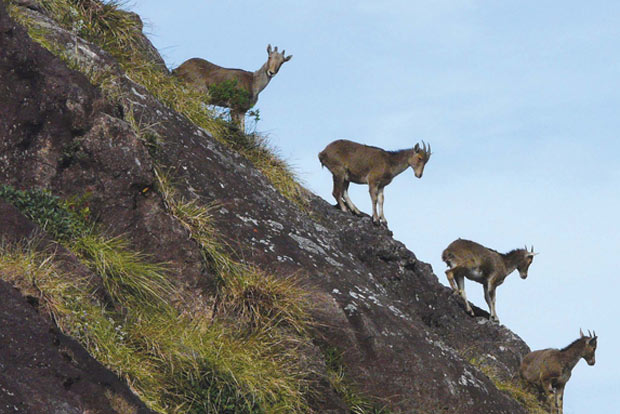Begin typing your search...
Chasing The Tahr, Over The Nilgiris
WWF and the forest depts of TN, Kerala kick-started second phase census to ascertain its population

Chennai
After five years, World Wildlife Fund (WWF) India in coordination with Tamil Nadu and Kerala Forest Departments has kick-started the second phase census of the Nilgiri tahr, the State Animal of Tamil Nadu that is endemic to the pristine mountains in the Western Ghats. The first stretch of census trail covering Kanniyakumari has been completed, and the next would be at Tirunelveli.
For the first time, the conservationists are also exploring the opportunity to translocate the isolated Nilgiri tahr population to Glenmorgan terrain above Ooty so that it would have one more home in the Nilgiri biosphere at an elevation of more than 2,400 metres above sea level.
The final report will talk about the habitat destruction, the role of Tahr in protecting the riverine habitats and also discuss the reintroduction of tahr in areas where they have been locally extinct, Sanket Bhale, WWF India head Western Ghats landscape, told DT Next.
To make the rivers flow, the mountain ecosystem is important and tahr is the champion in balancing the ecosystem at high altitude mountain ranges, he added.
The previous census was taken in 2015, when the estimated population was around 3,100. “Now we are hoping for a marginal increase with a range between 3,200 to
3,500 individuals. It will take a few months for the final figures,” said MA Predit, associate coordinator, Nilgiri Tahr Project, WWF India.
Pointing out the significance of tahr in protecting the mountain ecosystem, Predit said it can keep the cliffs fertile through the recycling process consuming 120 types of plants ranging from herbs, grass, leguminous plants and saplings of shola trees.
“Protection of mountain grassland is very important to sustain the life and flow of rivers.
Though other ungulates like Sambar also perambulate high altitudes, tahr is the only animal that can reach the cliffs, turning mountains into a fertile grassland habitat and thus helping the rivers to originate,” the biologist said.
Forest fires and tahr dung bring in micronutrients into the rivers making them a rich source of minerals. In case of elephant dung, about 60 to 70 per cent is non digestive waste and for other small herbivores the dung has 40 to 50 per cent of nondigestive waste. But in case of tahr dung, the waste is almost completely digested with rich nitrogen content. Further, the Tahr pellets are instant manure for mountain flora, explained Predit, who has been studying the tahr population for more than a decade.
Visit news.dtnext.in to explore our interactive epaper!
Download the DT Next app for more exciting features!
Click here for iOS
Click here for Android
Next Story



